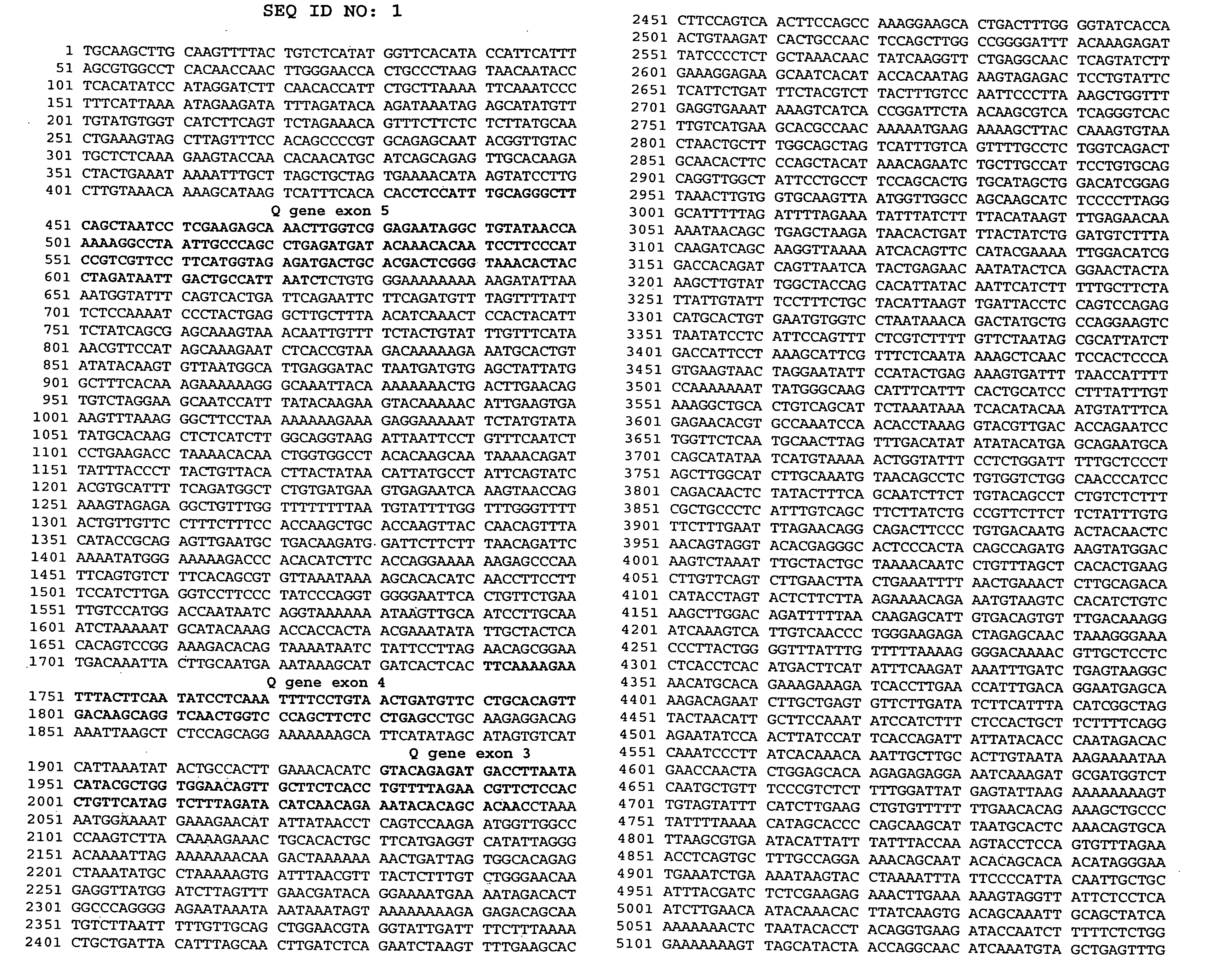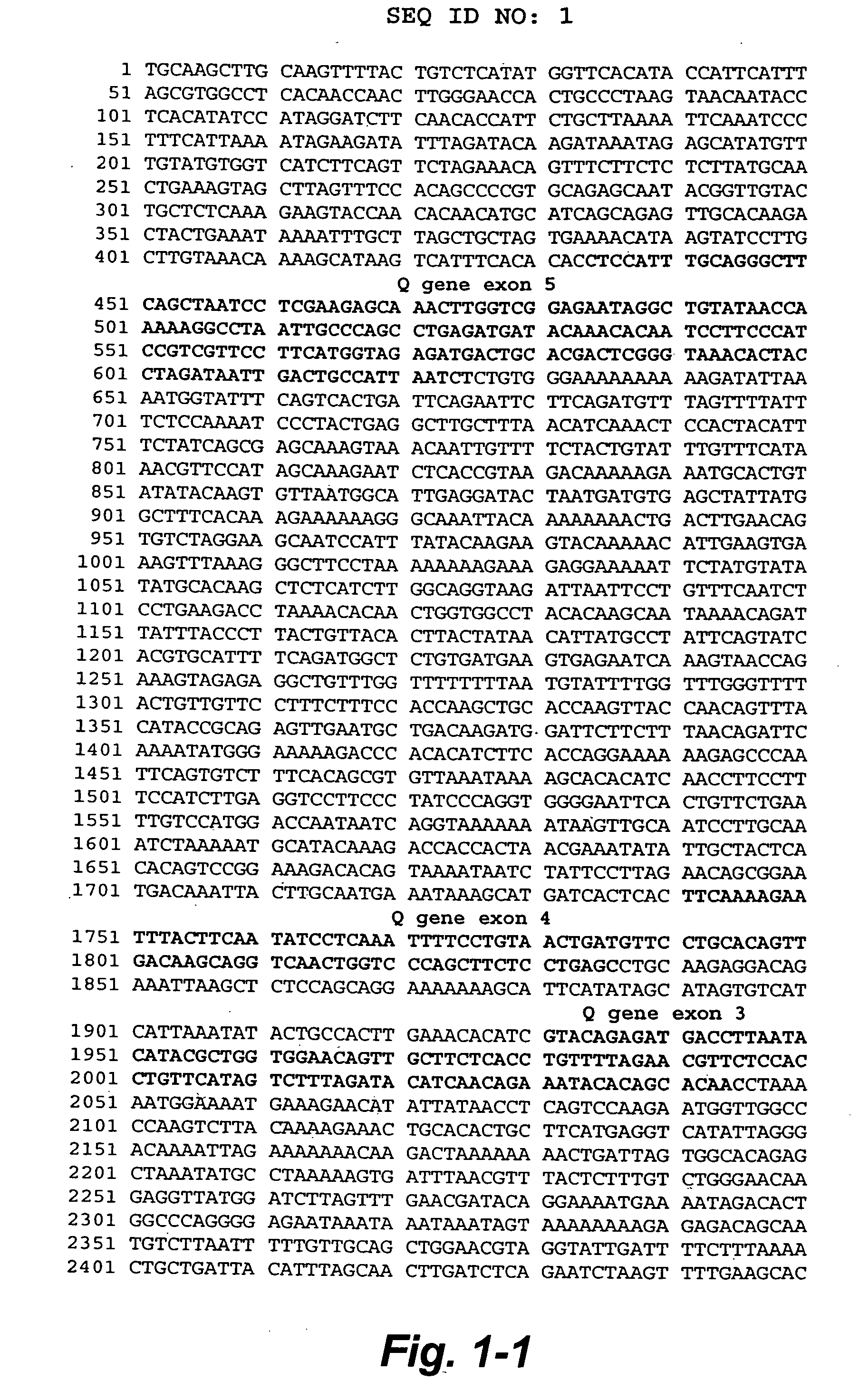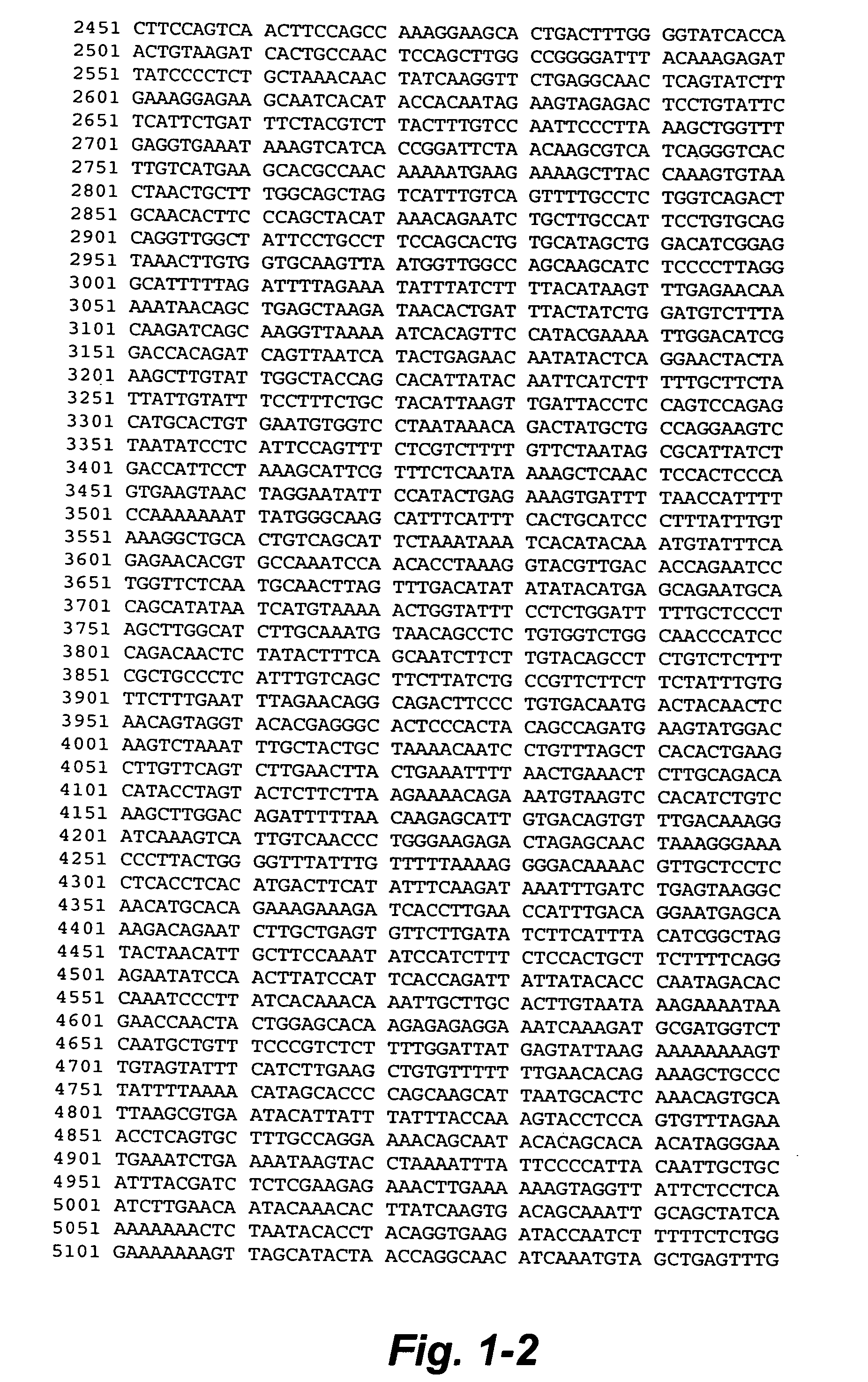Avian transgenesis using an ovalbumin nucleotide sequence
a technology of ovalbumin and nucleotide sequence, which is applied in the field of isolated nucleic acid molecules, can solve the problems of attendant maintenance costs, and achieve the effect of reducing the positional variation of gene expression
- Summary
- Abstract
- Description
- Claims
- Application Information
AI Technical Summary
Benefits of technology
Problems solved by technology
Method used
Image
Examples
example 1
Construction of a Complete Ovalbumin Locus from Two Overlapping BACs
[0151]A complete ovalbumin locus BAC was created from two overlapping BACs that together contained the complete ovalbumin locus, as shown in FIG. 6. The nucleotide sequences of BAC 120 and BAC 77 are in opposite directions with respect to the vector backbone pECBAC1.
[0152]BAC 120 was digested with Not I and a 145 kb fragment was re-cloned, but in the reversed orientation (flipped), into Not I digested vector backbone pECBAC1. This resulted in a deletion of a region of approximately 11.5 kb from the 5′ end of the insert sequence of BAC 120 and which was upstream of the DNase I sensitivity region. The reversed BAC 120 ‘flip’ and BAC 77 clones were digested with Srf I and RARE digested using an oligonucleotide targeted to an EcoRI site within ovalbumin. 5′ and 3′ fragments were isolated by CHEF gel electrophoresis, and ligated together to yield the complete contiguous ovalbumin genomic locus BAC.
example 2
Expression of a Heterologous Gene by a Chicken Ovalbumin Locus BAC
[0153]cDNA constructs encoding immunoglobulin light-chain and heavy-chains of a human IgG1 kappa monoclonal antibody were inserted in-frame with the ovalbumin translation start site of separate ovalbumin locus-containing BACs, as shown in FIG. 3. The immunoglobulin chain-encoding cDNAs were first inserted into a plasmid that contained a 2.7 kb EcoRI fragment from the ovalbumin gene and which included the ovalbumin start site. The resulting vector was then digested with restriction endonuclease EcoR1 and cloned into an approximately 195 kb ovalbumin BAC which had been subjected to EcoR1 recA-assisted restriction endonuclease (RARE) digestion as described by Boren et al., 1996, Prot. Sci. 5,: 2479-2484 and incorporated herein by reference in its entirety.
[0154]Transgenic birds were created by cytoplasmic co-microinjection of human light-chain and heavy chain BACs followed by ovum transfer as described in U.S. patent app...
example 3
Expression of a Heterologous Gene by a Chicken Ovalbumin Locus BAC
[0156]The open reading frame of the firefly luciferase gene was inserted into the ovalbumin translation start site of an ovalbumin locus BAC as shown in FIG. 3. The luciferase gene was inserted into a plasmid that contained a 2.7 kb EcoR1 fragment from the ovalbumin gene and which includes the ovalbumin start site. The resulting vector was then digested with EcoR1 and cloned into an approximately 195 kb ovalbumin BAC which had been subjected to EcoR1 recA-assisted restriction endonuclease (RARE) digestion as described by Boren et al., 1996, Prot. Sci. 5,: 2479-2484 and incorporated herein by reference in its entirety.
[0157]Primary tubular gland cells isolated from the oviduct of laying quail (Sanders and McKnight, Endocrinology 116, 398-405 (1985)), were transfected using the ovalbumin-luciferase construct or with a negative control CMV-IFN construct. Luciferase activity in cell extracts was analyzed two days post tra...
PUM
| Property | Measurement | Unit |
|---|---|---|
| pH | aaaaa | aaaaa |
| pH | aaaaa | aaaaa |
| nucleic acid sequence SEQ | aaaaa | aaaaa |
Abstract
Description
Claims
Application Information
 Login to View More
Login to View More - R&D
- Intellectual Property
- Life Sciences
- Materials
- Tech Scout
- Unparalleled Data Quality
- Higher Quality Content
- 60% Fewer Hallucinations
Browse by: Latest US Patents, China's latest patents, Technical Efficacy Thesaurus, Application Domain, Technology Topic, Popular Technical Reports.
© 2025 PatSnap. All rights reserved.Legal|Privacy policy|Modern Slavery Act Transparency Statement|Sitemap|About US| Contact US: help@patsnap.com



